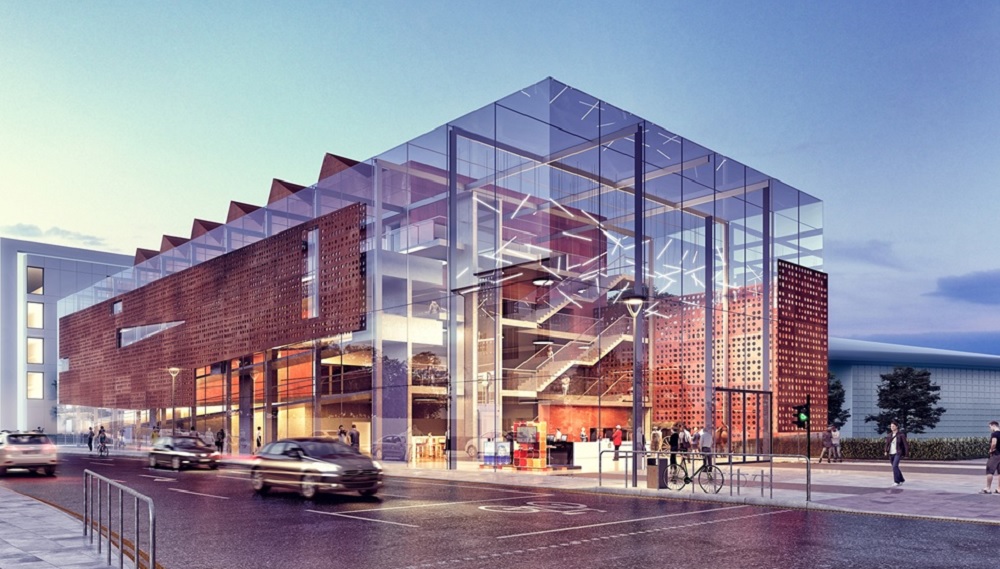Cardiff has a long pacifist history and it’s that that we should be celebrating – not a military museum

Jon Gower
It is instructive to consider the contents of the Museum of Military Medicine at its current home in an Army barracks in Surrey in light of its declared aim of becoming one of Wales’ premier tourist attractions should it move to a new home in Cardiff Bay.
Housing the four collections of the Royal Army Medical Corps, the Royal Army Veterinary Corps, Royal Army Dental Corps and Queen Alexandra’s Royal Army Nursing Corps the objects now on display include ‘uniforms and insignia, medical, dental and veterinary equipment, ambulances and much more besides.’
In the gift shop you can buy a centenary Dental Corps mug, or a ribbon for a Panama hat – a perfect steal at £ 11.50 – or a set of buttons for a mess waistcoat. Among the various military gewgaws and regimental tchotchkes you might find a lurking white elephant perhaps.
Creating a small version of the industrial-military complex in Cardiff Bay – the proposed site in Britannia Park looks directly across the Roath Basin at H.M.S Cambria, a big grey box and home to three Maritime Reserve Units – might be missing an important point about Cardiff. The city has a long and fascinating pacifist history and perhaps it’s that that we should be celebrating.
Some of the first words broadcast in Welsh on the BBC, when it was housed in a studio above Mr Kinshott’s music shop, now the Nisa Supermarket opposite Cardiff castle, were ‘Segurdod yw clod y cledd/A rhwd yw ei anrhydedd’ which very loosely translates as ‘Idleness becomes the sword/And rust is its honour.’ The words themselves were spoken by the Rev. Gwilym Davies, who thought of the idea that the children of Wales could great other children across the world, a goodwill message broadcast to this very day by Urdd Gobaith Cymru.
‘Peace’
Not far away, at the Quaker House on Charles St, the words ‘Peace’ and ‘Heddwch’ are literally chiselled into the stonework. The city’s civic centre houses the Welsh National Garden of Peace and of course the hugely imposing Temple of Peace. This was the brainchild of Lord Davies of Llandinam, himself a former soldier, who wanted to promote the ideals of international peace and the principles of health under one roof. The list of Cardiff’s connections goes on, including the commemorative statue to the struggles of the Greenham Common Women in City Hall, including 22 year old Helen Thomas, the peace activist from Newcastle Emlyn who lost her life whilst protesting against nuclear weapons at the airbase in Berkshire.
Also in City Hall is a statue of St David, our patron saint, commonly pictured with a white dove of peace on his shoulder . Then there is the Sri Chinmoy World Harmony Peace Statue, being an image of the Bengali spiritual teacher and one of Mahatma Gandhi, both already sited in Cardiff Bay.

Extraordinary
So, a simple proposal. Rather than knock down the lock-keeper’s house to clear the space for the museum, let’s keep it and use it to house a facsimile of what is, perhaps, the most extraordinary object connecting Wales with the peace movement.
In 1923 the women of Wales organised an unprecedented petition calling on America to lead the newly formed League of Nations. In an age before modern media and social networking a huge proportion of all the women in Wales signed it, collecting the names on foot, by the efforts of local committees, gathering from village to village, town to town. A staggering total of 390,296 signatures were duly contained in a leather-bound memorial, produced by the Gregynog Press and then placed in a great oak chest before a delegation of women travelled across the Atlantic to present it to President Calvin Coolidge in the White House.
Turning the lock-keeper’s cottage into a secure, permanently lit home for this sort of astonishing item would save millions of pounds and also be relevant to all the people who see it. I’d imagine there are architecture students who’d rise to the challenge of finding a decorous and safe way to display it, lit by a permanent candle maybe.
And while it’s not too late to reconsider creating a home for a white elephant, this possibly visitor-less museum on the rim of Cardiff Bay, it might also be a chance to reappraise our values and recalibrate our collective civic vision.

Support our Nation today
For the price of a cup of coffee a month you can help us create an independent, not-for-profit, national news service for the people of Wales, by the people of Wales.




